Have you ever wondered what okra is? What does it taste like? How do you pick a good one at the store? How do you store it? Well, you're in the right place! We're going to tell you all about this cool veggie, so you can make the best okra recipes.
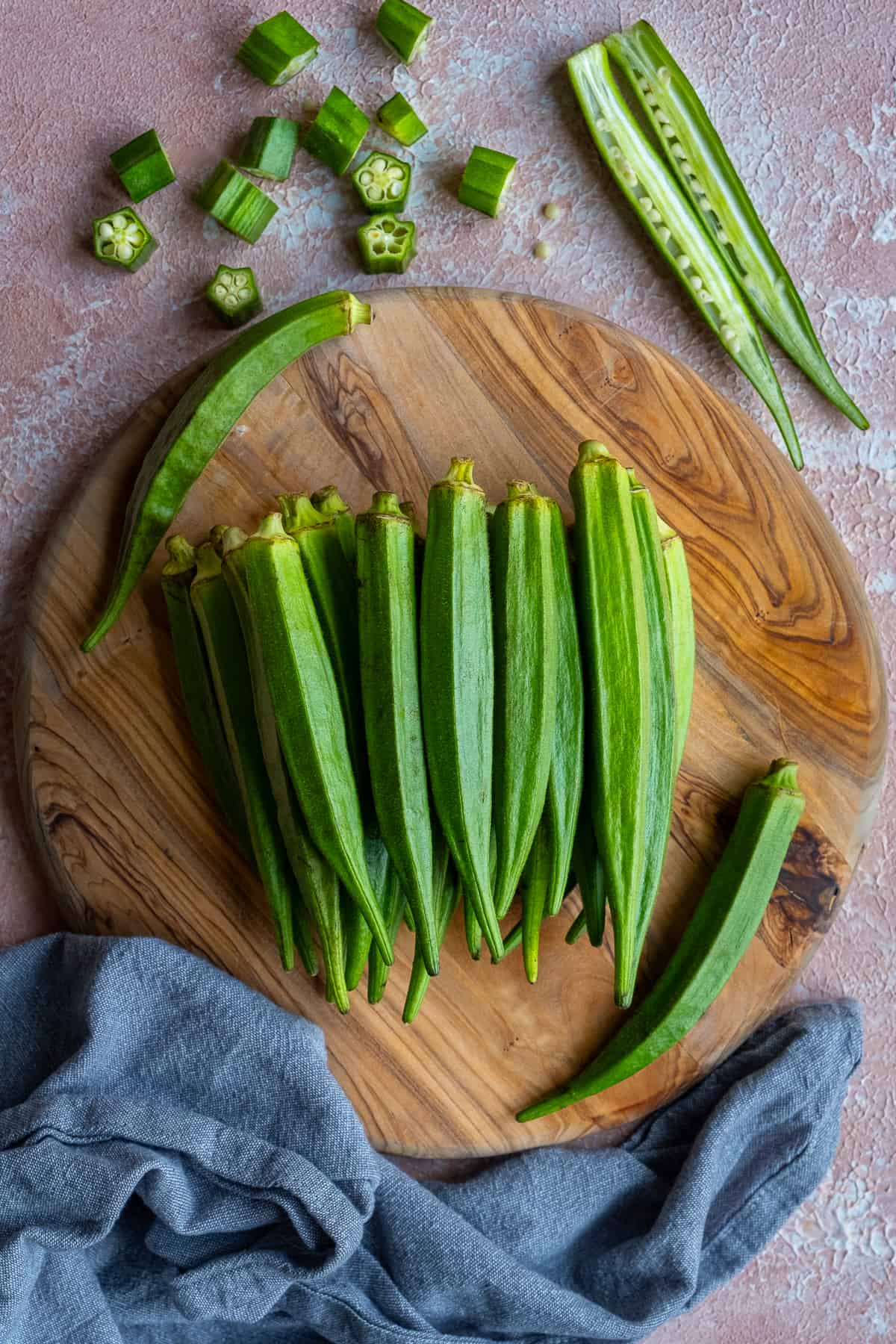
We have a special place in our hearts (and our kitchen) for okra. We cook it all the time, and one dish that we keep coming back to is bamya - a delightful okra stew that's comfort food at its best.
Now, if you're new to okra and curious to learn more about this quirky vegetable, keep reading. We've put together this guide based on our love and experience with okra, and we can't wait to share it with you. So, let's learn all about okra together!
Jump to:
What Is Okra?
Okra is a tasty green vegetable that grows on a flowering plant called "Abelmoschus esculentus." It's also known as "lady's fingers" because of its long, finger-like shape.
Inside, it has small edible seed pods. The outside of okra is a little fuzzy, and the inside can be slimy when it's cooked, but we have some tricks to keep that from happening!
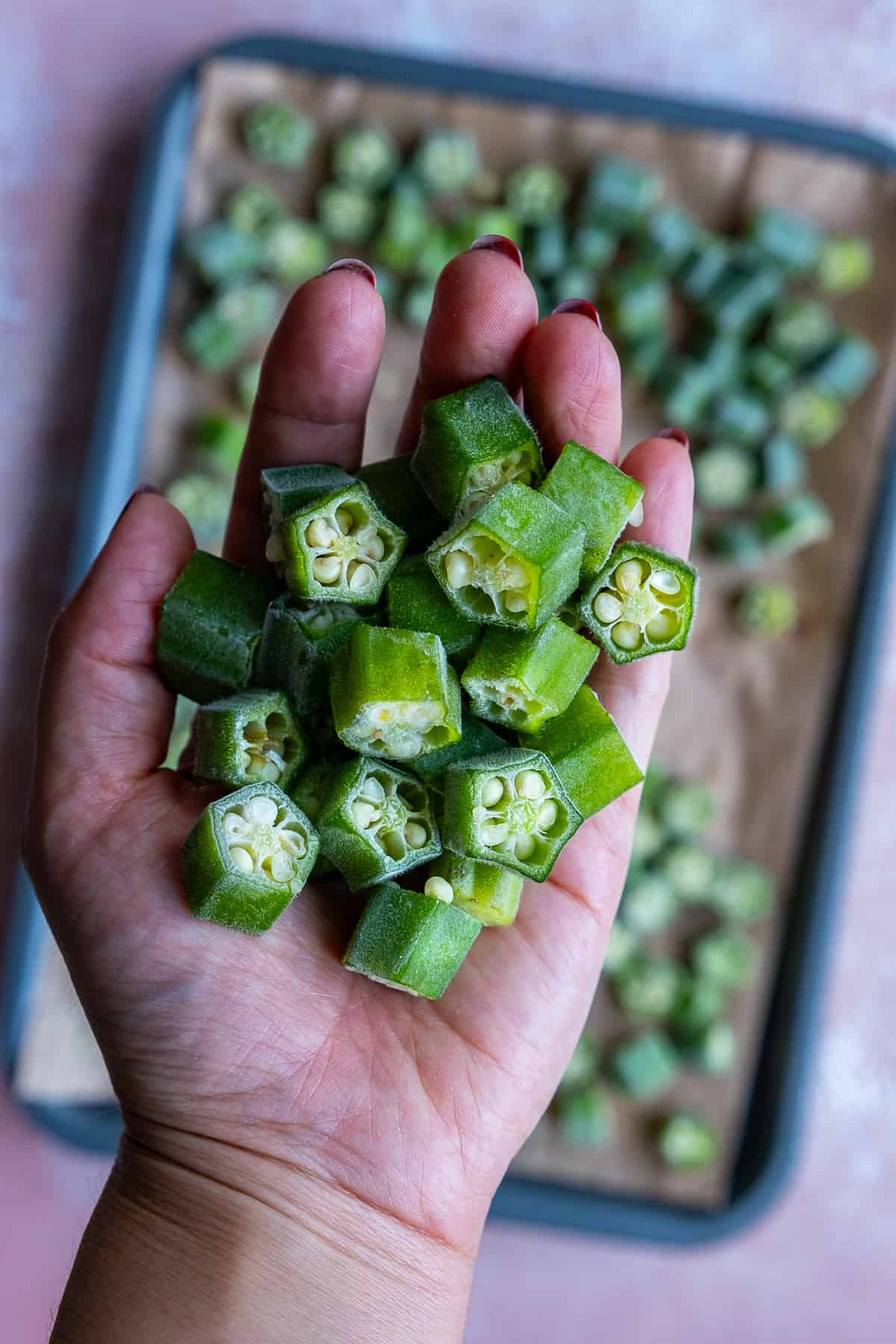
Is okra a fruit or a vegetable? Good question! Technically, okra is a fruit because it has seeds. But in the kitchen and at the dinner table, we call it a vegetable because of how we cook and eat it.
Okra originally comes from Africa, but now it's grown and eaten all over the world. It loves places with humid climates and warm temperatures. That's why it grows really well in places like Africa, Ethiopia, South America, the Caribbean, South Asia, Egypt, India and the Middle East.
People love okra because it's not just tasty, but it's also really good for you. It's packed with vitamins and fiber. Plus, you can cook it in so many ways. You can slice it up and put it in stews, fry it, grill it, or even pickle it!
Alright, now that we know what okra is, let's talk about when and where it grows best.
How Does It Taste?
Fresh okra has a flavor that's kind of mild and a little bit sweet.
Some people think it tastes a bit like eggplant, while others say it reminds them of green beans or asparagus. But, okra also has a unique "grassiness" to it that gives it its own special flavor.
When you cook okra, it can also get a little bit nutty, especially when it's fried or grilled. That's one of the reasons why it's so yummy in stews and other dishes.
But there's something else about okra you should know - it can be slimy. The inside of okra has a sticky stuff called mucilage.
When okra is cut and cooked, this sticky stuff can come out and make the okra feel slimy. But don't worry! Not all cooking methods make okra slimy. In fact, we have some tricks to keep your okra slime-free!
How to Prepare & Cook Okra
Before moving to the various methods of cooking okra, it's important to know how to prepare it.
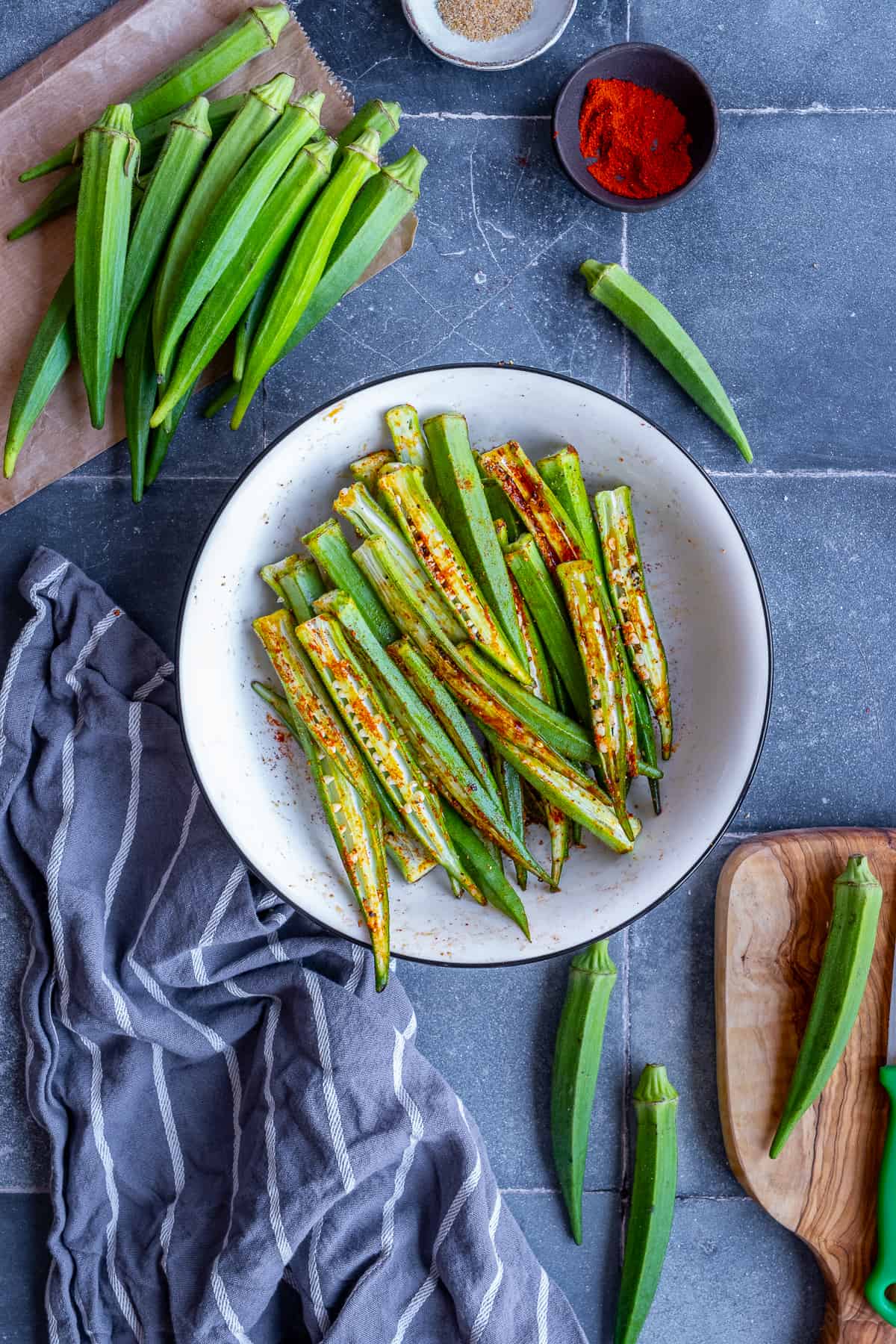
To prepare okra for cooking, first, give it a good rinse under cold water to remove any dirt. Alternatively, you can soak it in a mixture of water and vinegar. Then, pat it dry completely with a kitchen towel.
Trim off the stem ends, but be careful not to expose the inner seeds to minimize the release of the slimy substance. After that, you can leave the okra whole or cut it into slices, depending on your recipe. Learn how to cut okra here!
Now, your okra is ready to be cooked in a variety of ways!
- Stewing: Okra is a great addition to stews and soups, adding a nice texture and flavor to the dish. Check out our Middle Eastern okra stew with tomato sauce, Bamya Recipe!
- Roasting: Preheat your oven, toss the okra in a little oil and your favorite spices, and roast until it's golden for a nutty flavor.
- Making Chips: Roast okra slices first for flavor, and then slow-bake to get that perfect, crunchy chip texture. Check out our okra chips recipe!
- Air Frying: Toss the okra in a little oil and your favorite seasonings, and air fry until it's crispy. It's a healthier alternative to traditional frying. Check out our Air Fryer Okra, Air Fryer Frozen Okra.
- Frying: For a classic treat, coat the okra in a batter made from flour, cornmeal, and your favorite seasonings, then fry it in hot oil until it's golden and crispy. Our Breaded Okra In Air Fryer is much lighter (and healthier) version of it.
- Grilling: Skewer the okra, brush it with some oil and spices, and grill until it's charred and delicious for a tasty summer treat.
- Sauteeing: Sauteed okra is another simple and delicious method. Heat some oil in a pan, add the okra and any spices or other ingredients you like, and saute until it's tender and slightly browned.
- Pickling: For a tangy, crunchy treat, try pickling okra in vinegar with some spices. This is not a cooking method but an amazing way of eating okra.
How To Prevent The Sliminess
Inside okra, there's a substance called mucilage. This is a type of fiber that is gooey or slimy when it gets wet.
This slime factor is completely natural and actually good for you! But, some people (like us) don't like the texture it gives to dishes.
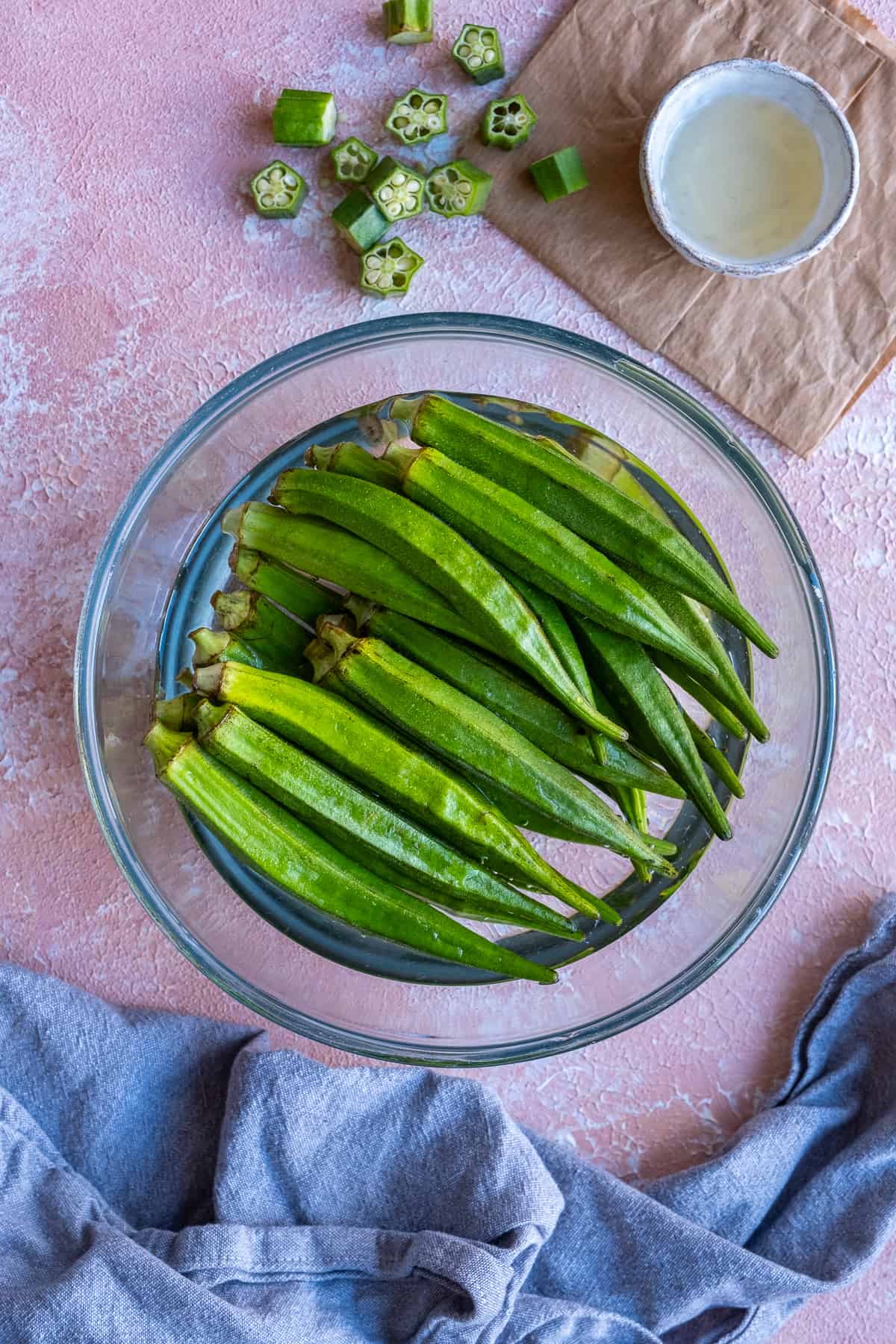
If you're one of those people, don't worry! Here are our tips to cook okra without the slime.
- Cook it fast: Quick cooking methods like frying, grilling, or air frying can help reduce the slime. The high heat cooks the okra quickly, so it doesn't get too slimy.
- Use acid: We always soak it in a mixture of water and lemon juice if we are planning to slice it. Also, adding acidic ingredients like tomatoes, lemon juice, or vinegar to your cooking can help cut the slime. The acid helps break down the sticky stuff inside the okra. This is really helpful when using it in a stew or gumbo.
- Keep it whole: The slime comes from the inside of the okra, so if you don't cut it, there's less slime. If you can, try to use whole okra in your recipes.
- Dry it out: Roasting or grilling okra can help dry it out and reduce the slime. Just be sure to toss it in a little oil first so it doesn't stick.
But don't worry too much about the slime – it's natural and is actually full of healthy fiber!
Varieties
Did you know there are lots of different types of okra? That's right! Even though most of the okra you see in the store is green, okra comes in other colors too. Let's learn about some of them.
- Clemson Spineless Okra: This is the green okra you see most often. It's long and doesn't have any spines. That makes it easy to pick and cook with!
- Red Burgundy Okra: This okra is a beautiful red color, but don't be surprised if it turns green when you cook it. Red Burgundy okra is a bit shorter than the green kind, and many people think it's a little sweeter too.
- Perkins Long Pod Okra: This type of okra grows very long pods - sometimes they can be up to 8 inches! Perkins Long Pod okra is known for its soft texture and delicious taste.
- Blondy Okra: Blondy okra is a bit smaller than most other types, but it's still packed with flavor. This variety is light green and has a slightly sweet taste that works well in lots of different dishes.
These are just a few of them. Learn more about the varieties of okra here.
How To Buy The Best Okra
Okra is a summer plant. That means it grows the best during the warm summer months and into early fall. So, if you're looking for the freshest okra, that's the best time to find it.
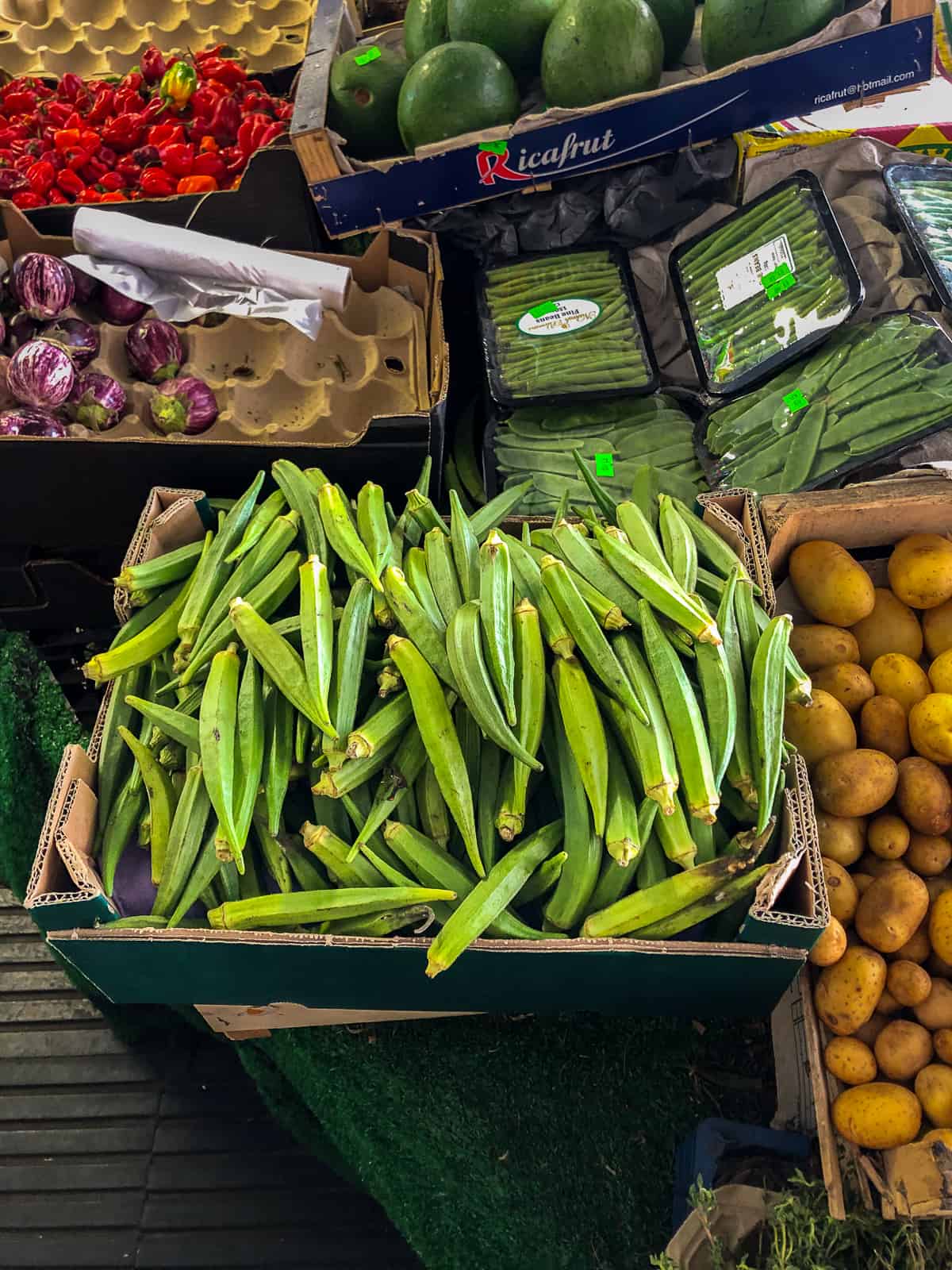
When you're at the store or farmer's market, how do you pick the best okra? Here are some simple tips to help you choose.
- Look at the color: Fresh okra should be a nice, bright green color. If it's turning brown or black, that means it's old.
- Check the size: The best okra are usually small to medium-sized. That's about 2 to 4 inches long. Bigger okra can be tough and not as tasty.
- Feel it: Fresh okra should feel firm, not soft or squishy. It should also be dry, not wet or slimy.
- No blemishes: Check for cuts, bruises, or dark spots. These can mean the okra is old or damaged.
- Smell it: Fresh okra should have a mild, fresh smell. If it smells bad or strong, it's probably old.
Storage
Once you've picked the perfect okra at the store, you'll want to keep it fresh until you're ready to cook it. Here's how to do that.
- Keep it dry: Okra likes to be dry. Don't wash it until you're ready to use it. If it gets wet, it can get slimy and go bad faster.
- Cool it down: Okra likes to be cool. The best place to store it is in the fridge. Just put it in a paper bag or wrap it in a paper towel and then put it in the vegetable drawer.
- Use it quickly: Okra is best when it's fresh, so try to use it within a few days of buying it.
- Freeze it: If you have more okra than you can use in a few days, you can freeze it. Learn how to freeze okra here. Basically, cut off the ends and slice it if you want. Blanch the okra in boiling water for a few minutes, then cool it quickly in ice bath. Dry it off, then put it in a freezer bag or container. It can stay good in the freezer for several months!
Is Okra Good For You?
Absolutely, okra is great for you! It's low in calories, contains protein and packed with antioxidants.
It is rich in vitamins A and C, which are good for your eyes and immune system.
It also has plenty of fiber, which can help you feel full and maintain steady blood sugar levels. Moreover, the fiber in okra can also feed the beneficial bacteria in your gut, which contributes to overall gut health and digestion.
Plus, okra is a good source of folate, which is good for your heart. So, adding okra to your diet might reduce the risk of heart disease.
You can find more about the nutrients and health benefits of okra here.
FAQs
Yes, okra can be a good choice if you're trying to lose weight. It's low in calories and high in fiber, which can help you feel full and satisfied without eating too many calories.
Yes, you can grow okra at home if you live in a warm place. It likes the sun and doesn't need too much water. But it needs a lot of space because it can get quite big.
People eat raw okra for a few reasons. One reason is that raw okra has a lot of vitamins and minerals. When you cook okra, some of these can get lost. So eating it raw makes sure you get all the good stuff. Also, raw okra has a fresh, grassy flavor and a crisp texture that some people really like. It's great in salads or with a dip.
Raw okra isn't usually hard to digest. It has lots of fiber, which is good for your digestion. However, some people might find raw vegetables, including okra, a bit harder to digest and may cause bloating or gas. If you have a sensitive stomach, you might prefer it cooked.
Okra has a taste all its own. It's subtly sweet and grassy like zucchini, but it also has a slight earthiness that could be likened to eggplant. However, okra has a unique texture, especially when cooked, which can make it seem quite different from both eggplant and zucchini.
Fresh okra typically does not have a sour or bitter taste. Its flavor is usually described as mildly sweet and slightly grassy.
Okra is high in folate, which is important for pregnant women. It also has lots of fiber, which can help with digestion and weight management. Additionally, okra's fiber and antioxidants support heart health, an important factor for women's overall well-being.
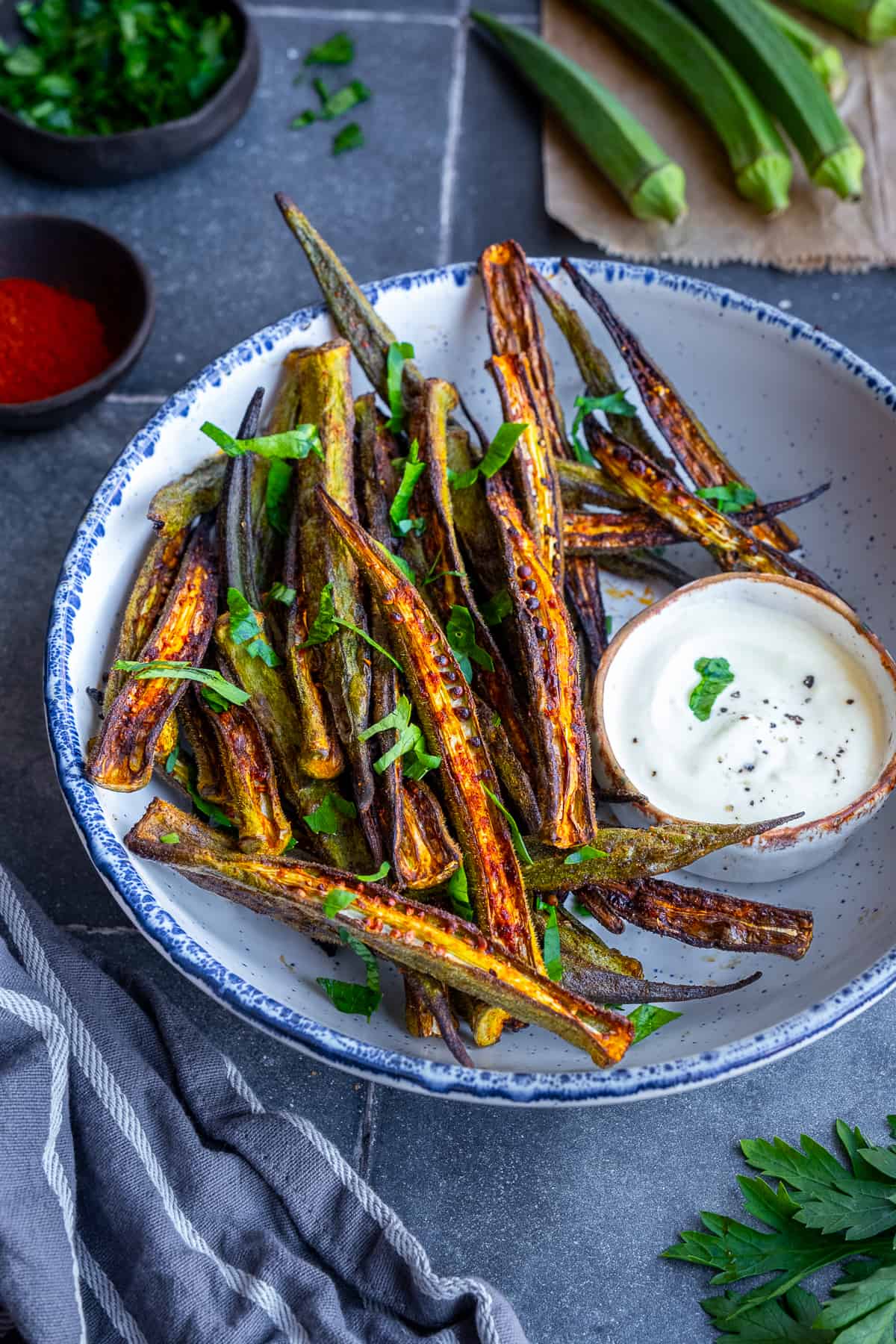
Okra Recipes
More Produce Guides
You might also like:
As always: If you make this recipe, let us know what you think by rating it and leaving a comment below. And post a pic on Instagram too—tag @give_recipe so we can see!
Sign up for the FREE GiveRecipe Newsletter to get the new recipes into your inbox! And stay in touch with us on Facebook, Pinterest, YouTube and Instagram for all the latest updates.


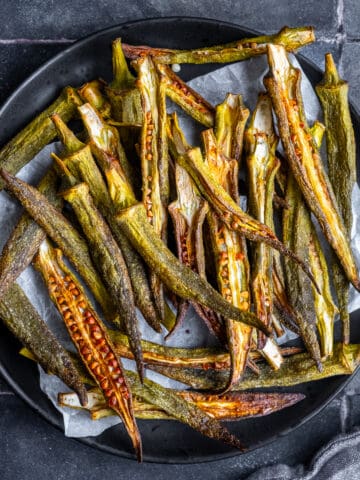


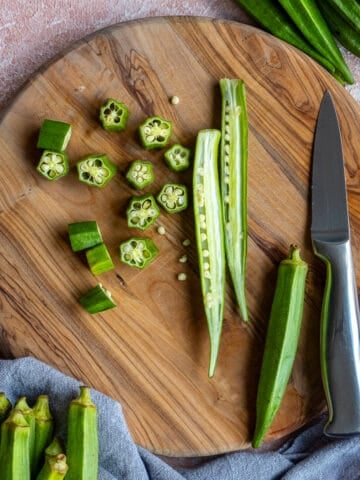
Leave a Reply